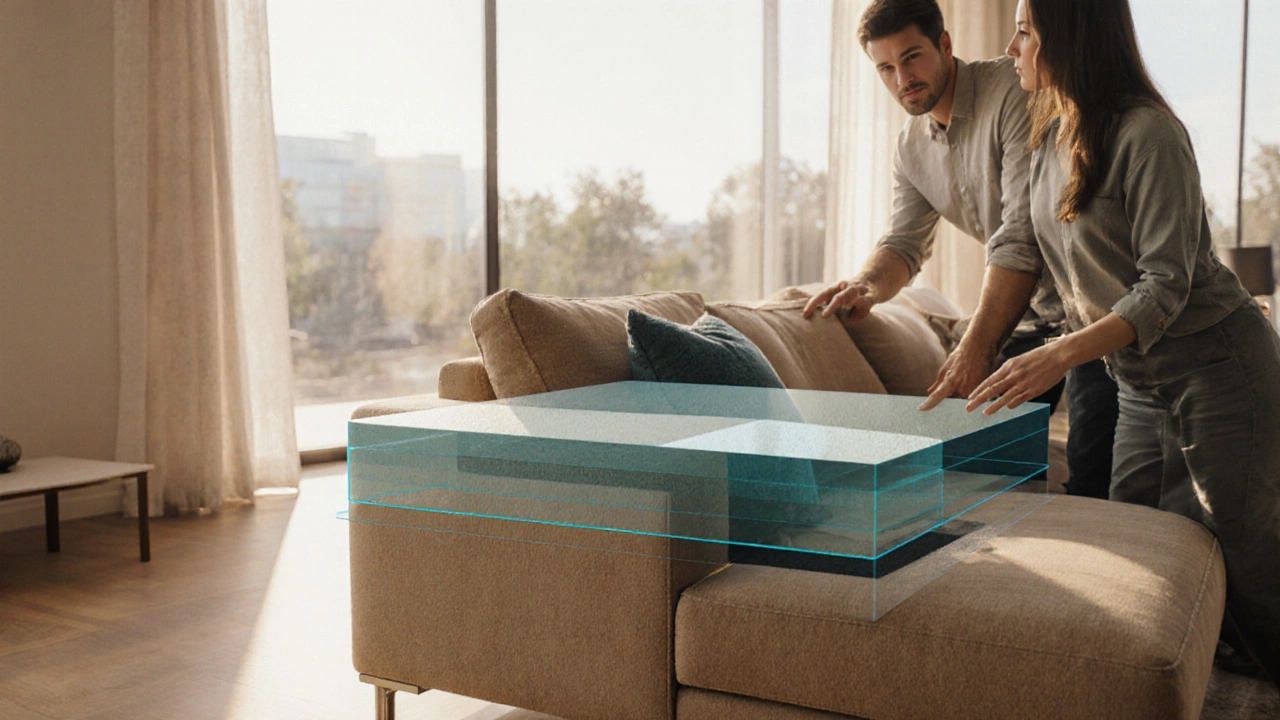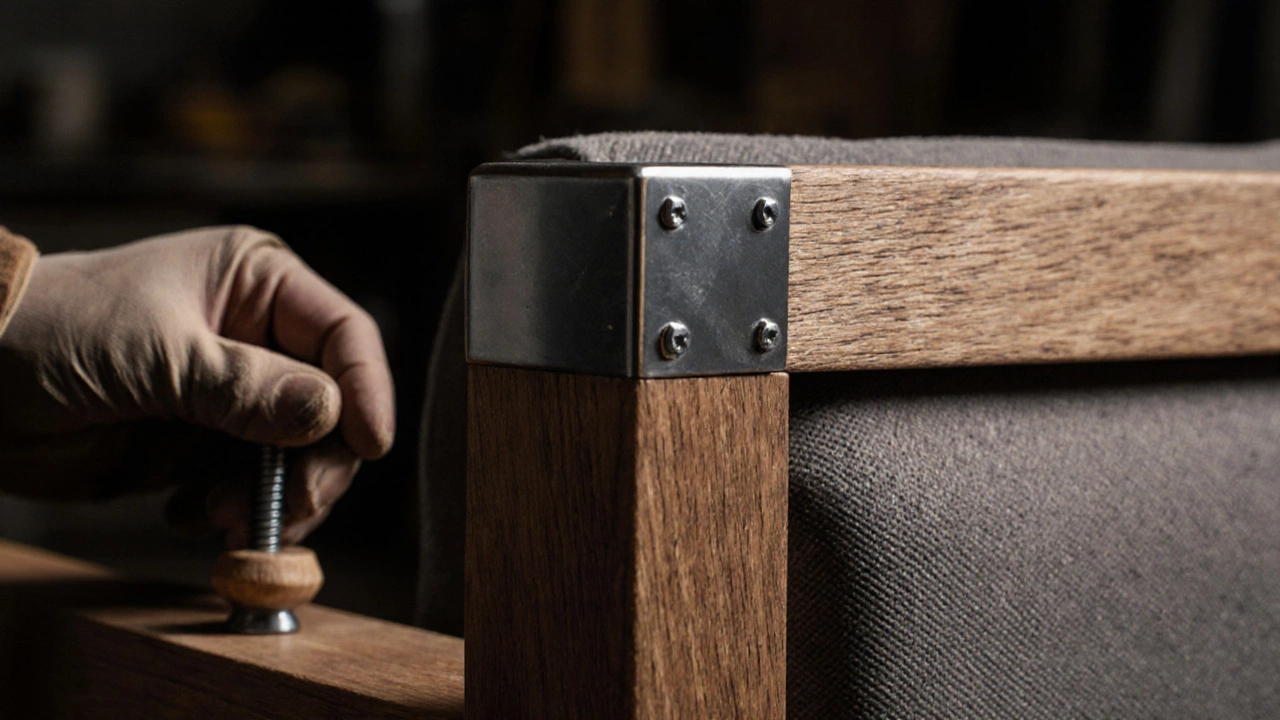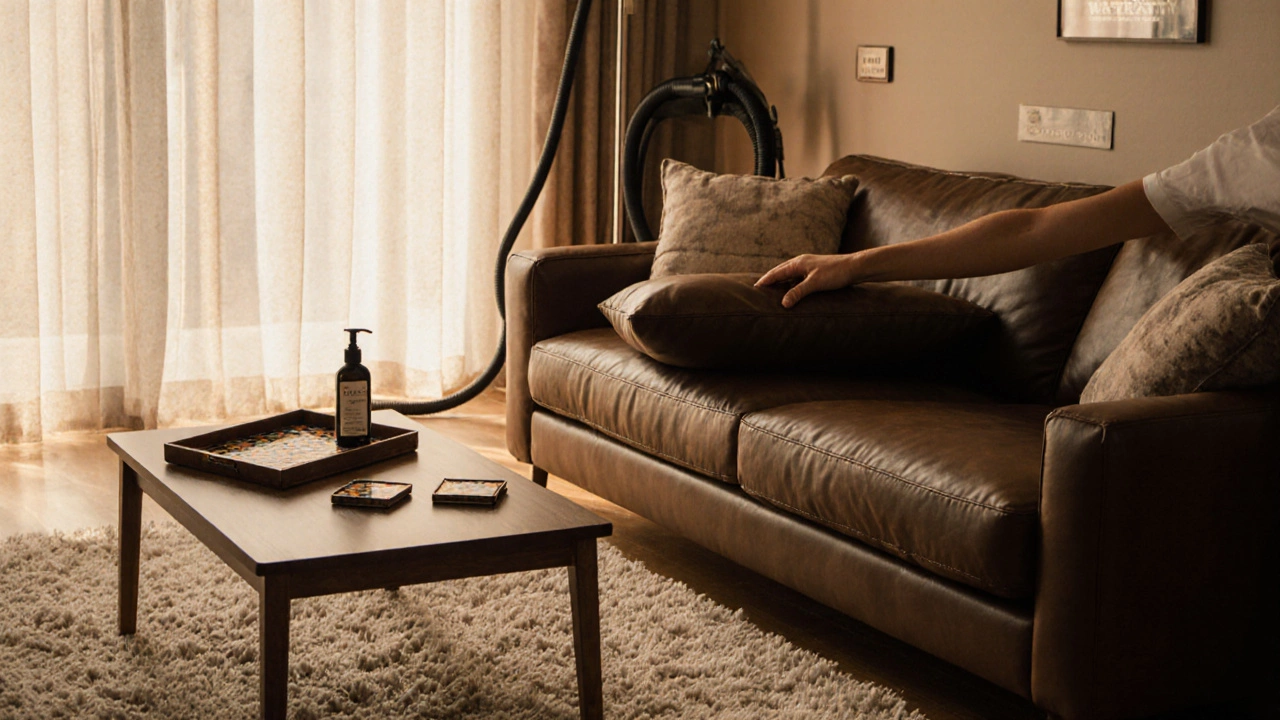Most Durable Sofa Types: Materials, Fabrics & Tips
 Oct, 20 2025
Oct, 20 2025
When you’re hunting for a Sofa a piece of seating furniture designed for comfort and style in living areas, durability often tops the checklist. You want something that laughs at spills, survives kids’ jumps and still looks good after years of use. Below we break down exactly which sofa builds stand the test, how to spot them in a showroom, and simple upkeep tricks that keep your investment looking fresh.
Understanding Sofa Durability
Durability isn’t a single feature - it’s a mix of frame strength, cushion resilience, and upholstery wear resistance. Think of a sofa as three layers working together: the skeleton (frame), the body (cushions), and the skin (fabric). If any layer fails, the whole piece suffers.
Most shoppers focus on looks and comfort, but a well‑built frame can add 10-15 years to a sofa’s life. Cushion fill determines how quickly the seat sags, while fabric choice influences stain resistance and pilling. By evaluating each layer, you can confidently answer the question: which sofa will still look and feel great after a decade?
Frame Materials That Stand the Test
Let’s start with the skeleton. A sturdy frame is the foundation of any long‑lasting sofa.
- Hardwood Frame typically kiln‑dried oak, maple or beech, providing high tensile strength and resistance to warping. Hardwoods are the gold standard - they can bear heavy daily use without bending.
- Metal Frame often steel or aluminum, offering excellent rigidity and resistance to insect damage. Metal excels in modern designs but can dent if hit hard.
- Engineered wood (plywood or laminated veneer lumber) - offers decent strength at a lower price point but may delaminate over time if exposed to moisture.
- Particleboard - the cheapest option; it’s prone to sagging and swelling, making it a poor choice for high‑traffic homes.
When you inspect a sofa in store, look for reinforced joints: mortise‑and‑tenon, dowel, or metal brackets. Avoid sofas that rely on staples or glue alone.
Upholstery Fabrics That Resist Wear
Your sofa’s skin sees the most action - spills, pets, sunlight. Here are the fabrics that keep their look:
- Leather Upholstery full‑grain or top‑grain leather that develops a patina and is naturally resistant to spills and scratches. It’s pricey, but a well‑cared leather sofa can outlive many fabric pieces.
- Microfiber Upholstery a tightly woven polyester blend that repels liquids and hides pet hair. Ideal for families with kids or pets.
- Performance fabrics (e.g., Sunbrella, Crypton) - engineered to resist stains, UV fading, and pilling. Great for high‑traffic areas.
- Traditional linen or cotton - breathable and stylish, yet they stain easily and may pill over time.
Check the fabric’s rub test rating (A‑F). An “A” rating means the material can withstand heavy abrasion, a key indicator of long‑term durability.

Cushion Fillings and Longevity
Cushions are the body of the sofa. Their fill determines how fast the seat will sag.
- High‑Density Foam offers firm support and holds its shape for 7‑10 years. Look for foam with a density of 30+ pounds per cubic foot.
- Down or feather fill - extremely plush but loses loft quickly, often within 2‑3 years.
- Latex foam - resilient and breathable, but higher cost; lasts 8‑12 years if well‑supported.
- Polyester fiberfill - cheap, easy to replace, but tends to flatten fast.
Many premium sofas use a combination: a high‑density core for support, topped with a layer of down for softness. This hybrid approach gives both durability and comfort.
How to Test Durability Before Buying
- Lift the sofa by the armrests. A sturdy frame should feel solid, not squeaky.
- Press on the cushions. They should rebound quickly without lingering depressions.
- Inspect the stitching. Double‑stitched seams are less likely to fray.
- Ask for the frame material and joint type. Reputable brands will disclose hardwood species and reinforcement methods.
- Request a fabric rub test certificate if you’re considering performance fabrics.
Doing these simple checks can save you from buying a sofa that looks great now but falls apart in a few years.

Maintenance Tips to Extend Sofa Life
Even the toughest sofas benefit from regular care.
- Rotate cushions every 3‑4 months to even out wear.
- Vacuum fabric weekly to remove dust that can break down fibers.
- Apply leather conditioner every 6 months to keep the material supple.
- Use coasters or trays on armrests to prevent heat stains from dishes.
- Address spills immediately - blot, don’t rub, and use the manufacturer’s cleaner for specific fabrics.
These habits add years to your sofa’s lifespan and keep it looking fresh.
Quick Decision Checklist
- Frame: Choose hardwood or reinforced metal.
- Fabric: Aim for leather, microfiber, or an A‑rated performance fabric.
- Cushion: High‑density foam core with optional down layer.
- Joint construction: Look for mortise‑and‑tenon, dowel, or metal brackets.
- Warranty: Minimum 5‑year frame warranty signals confidence from the maker.
Cross off each item and you’ll walk away with a sofa that can handle daily life for years to come.
| Component | Material | Typical Lifespan | Pros | Cons |
|---|---|---|---|---|
| Frame | Hardwood (oak, maple) | 15+ years | Strong, resists warping | Heavier, pricier |
| Frame | Metal (steel) | 12-15 years | Rigid, insect‑proof | Can dent, colder feel |
| Upholstery | Leather | 20+ years | Stain‑resistant, ages well | Initial cost, needs conditioning |
| Upholstery | Microfiber | 10-12 years | Pet‑friendly, easy clean | May pill over time |
| Cushion | High‑Density Foam | 7-10 years | Firm support, retains shape | Can feel hard without top layer |
| Cushion | Down/Feather | 2-3 years | Luxuriously soft | Flattens quickly |
What frame material lasts the longest?
Solid hardwood, especially kiln‑dried oak or maple, typically outlasts metal and engineered wood because it resists warping and can bear heavy daily use for 15 years or more.
Is leather really more durable than fabric?
Full‑grain leather develops a protective patina and is naturally resistant to spills and scratches, making it one of the most durable upholstery options. Proper care extends its life well beyond 20 years.
How can I tell if a sofa’s cushions will sag quickly?
Check the foam density - 30+ lbs/ft³ is a good benchmark. Higher density foam retains its shape longer. Also, a dual‑layer design (foam core with a softer top) reduces early sagging.
Do performance fabrics really resist stains?
Yes. Fabrics like Sunbrella and Crypton are engineered with stain‑blocking treatments and have high rub‑test ratings, making them ideal for households with kids or pets.
What warranty should I look for?
A minimum five‑year warranty on the frame signals confidence from the manufacturer. Some premium brands even offer lifetime frame warranties.